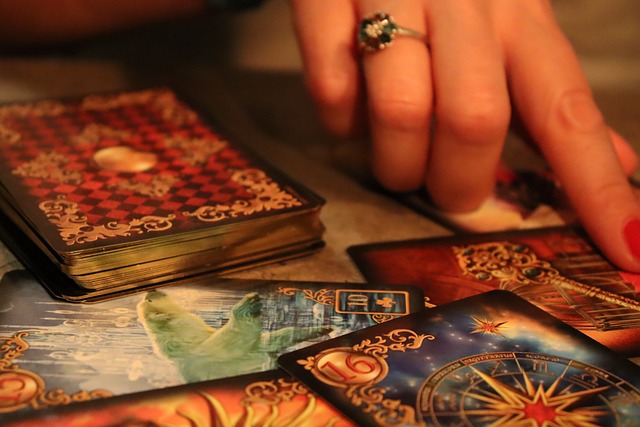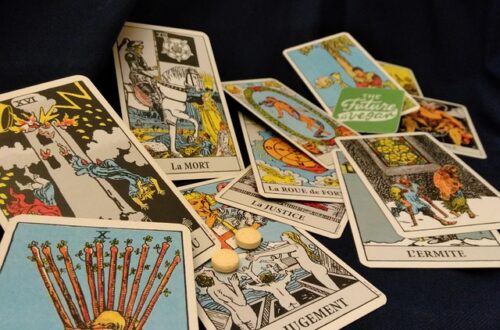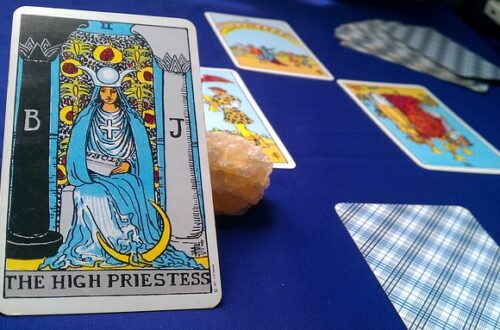
The best Tarot Spreads for decision making
Table of Contents
Te Best Tarot Spreads for Decision Making
In today’s fast-paced world, making decisions can often feel overwhelming. Many individuals seek guidance and clarity in various ways, and one such method is through Tarot readings. **Tarot cards** serve as a powerful tool for introspection, enabling individuals to explore their thoughts and emotions deeply. This article explores **some of the best Tarot spreads specifically designed for decision-making**. Whether you are contemplating a significant life choice or simply seeking clarity on a minor issue, these spreads can illuminate your path.
Understanding Tarot and Its Purpose
Before delving into specific spreads, it is essential to understand what Tarot is. **Tarot is a deck of cards, traditionally consisting of 78 cards**, divided into the Major Arcana and Minor Arcana. The Major Arcana cards represent significant life events and spiritual lessons, while the Minor Arcana cards focus on day-to-day events and experiences. When utilized in readings, Tarot cards can reveal insights into your subconscious mind and highlight areas that may require attention.
The Role of Intuition in Tarot Readings
Intuition plays a pivotal role in Tarot readings. Each card carries its unique meaning, yet personal intuition influences how these meanings resonate with the querent’s situation. When approaching a Tarot spread, one should remain open to the insights that emerge. Consequently, this openness allows for a more profound understanding of the cards and their implications. Remember, the cards do not dictate your fate; instead, they provide guidance, helping you navigate your choices.
Choosing the Right Tarot Spread for Decision Making
Selecting the right Tarot spread is crucial for effective decision-making. Various spreads serve different purposes, and some are specifically designed to address choices and dilemmas. Below, we outline several effective Tarot spreads that can aid in the decision-making process.
1. The Three-Card Spread
The **Three-Card Spread** is one of the simplest yet most versatile spreads available. It is particularly effective for decision-making as it allows you to explore various aspects of a situation. Each card represents different elements: the past, present, and future. The first card reflects past influences that may impact your decision. The second card provides insights into your current situation, while the third card forecasts potential outcomes based on your choice. This spread is ideal for quick insights and helps clarify your thoughts.
2. The Decision-Making Spread
The **Decision-Making Spread** is designed explicitly for evaluating options. This spread typically involves **five cards**, each representing different factors influencing your decision. Here’s a breakdown of the positions:
- Card 1: Option A – Represents the first choice.
- Card 2: Option B – Represents the second choice.
- Card 3: Pros of Option A – Highlights the advantages of the first choice.
- Card 4: Pros of Option B – Highlights the advantages of the second choice.
- Card 5: Outcome – Provides insight into the potential outcome based on your decision.
This spread encourages you to evaluate each option critically, weighing the pros and cons. As a result, it can lead to a more informed choice.
3. The Celtic Cross Spread
The **Celtic Cross Spread** is one of the most popular Tarot spreads, known for its depth and comprehensive insights. While it may seem complex, it offers detailed information that can illuminate your decision-making process. This spread consists of ten cards, each representing different aspects of the situation:
- Card 1: The present situation.
- Card 2: Challenges or obstacles.
- Card 3: The past influences.
- Card 4: The future possibilities.
- Card 5: Conscious thoughts.
- Card 6: Unconscious influences.
- Card 7: The querent’s position.
- Card 8: External influences.
- Card 9: Hopes and fears.
- Card 10: The potential outcome.
By using this spread, you can gain insight into the different layers of your situation. As a result, it provides a holistic view, helping you to understand the broader context surrounding your decision.
4. The Pros and Cons Spread
The **Pros and Cons Spread** is another effective method for evaluating decisions. This straightforward spread involves drawing **four cards**, with two cards dedicated to each option. Here’s how it works:
- Card 1: Pros of Option A.
- Card 2: Cons of Option A.
- Card 3: Pros of Option B.
- Card 4: Cons of Option B.
By examining the pros and cons for each option, you can gain clarity on which choice aligns best with your desires and values. This spread simplifies the decision-making process and helps you visualize the potential outcomes of each option.
Interpreting the Cards
Once you have laid out your spread, the next step involves interpreting the cards. **Each card’s meaning can vary depending on its position** in the spread and the context of your question. It is essential to consider both the card’s traditional meaning and your intuitive insights. By doing so, you will be able to connect the cards to your specific situation. **Look for patterns or recurring themes among the cards**, as these can provide additional guidance.
Using Reversed Cards
Some readers choose to interpret reversed cards, which can offer alternative meanings. Reversed cards may signify obstacles, delays, or internal conflicts. When using reversed cards, consider how their meanings relate to your decision. For instance, if a reversed card appears in a position representing options, it may indicate hesitation or doubt regarding that choice.
Practical Tips for Effective Tarot Decision-Making
1. Prepare Your Mind and Space
Before conducting a Tarot reading, it is crucial to create a conducive environment. Find a quiet space where you can focus without distractions. Additionally, take a moment to center yourself through deep breathing or meditation. This practice helps to clear your mind and opens you to receiving insights from the cards.
2. Formulate Clear Questions
When seeking guidance from the Tarot, it is essential to pose clear and specific questions. Avoid vague inquiries, as these can lead to ambiguous answers. Instead, formulate questions that directly relate to the decision you are facing. For instance, instead of asking, “What should I do?” consider asking, “What are the potential outcomes of pursuing Option A versus Option B?” This clarity will enable the cards to provide more relevant insights.
3. Reflect on Your Feelings
As you interpret the cards, pay attention to your emotions and intuitions. **Tarot readings are not solely about the cards themselves**; they also encompass your personal feelings and insights. Reflect on how each card resonates with your current emotional state. Trusting your intuition can lead to more meaningful revelations.
Conclusion
In summary, Tarot spreads can serve as valuable tools for decision-making. By using the right spreads and interpreting the cards effectively, you can gain clarity and insight into your choices. Remember that Tarot is not a definitive answer but a guide that empowers you to make informed decisions. Each reading offers an opportunity for self-discovery and growth, allowing you to navigate life’s complexities with greater confidence. Ultimately, whether you choose the Three-Card Spread, the Decision-Making Spread, or the Celtic Cross Spread, **the key is to remain open and receptive** to the messages that the cards convey.
Bibliography
- Greer, Rachel. *The Complete Book of Tarot Reversals*. St. Martin’s Press, 2002. ISBN: 978-0312269320
- Pollack, Rachel. *Seventy-Eight Degrees of Wisdom: A Book of Tarot*. Weiser Books, 1980. ISBN: 978-1578631712
- DuQuette, Lon Milo. *Understanding Aleister Crowley’s Thoth Tarot*. Weiser Books, 2003. ISBN: 978-1578632504
- Benebell Wen. *Holistic Tarot: An Integrative Approach to Using Tarot for Personal Growth*. North Atlantic Books, 2015. ISBN: 978-1583948048
- Vandenberg, Joan. *Tarot for Beginners: A Practical Guide to Reading the Cards*. New Page Books, 2013. ISBN: 978-1601632114




